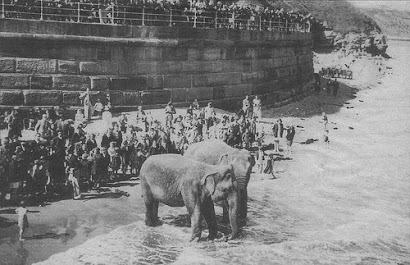 |
| William Gervase Beckett |
There were two elections in Whitby in close succession in 1905 and 1906. The first was a Parliamentary by-election on 1 June 1905. Two candidates contested the seat. The Conservatives selected William Gervase Beckett, the 39 year old younger brother of the previous MP Ernest Beckett. The reason for the by-election was that Ernest succeeded to Baron Grimthorpe on the death of his uncle on April 29th 1905 and vacated the seat.
The candidate standing against him was Noel Edward Buxton, a 36 year old Liberal with an interest in temperance reform. Unfortunately he fell foul of the Temperance League because of his supposed brewery interests. Despite the Temperance League traditionally supporting the Liberals, they threatened to withdraw their support unless another less controversial candidate was put forward.
 |
| Noel Edward Buxton |
Despite this, and with a 79% turn out, Buxton won by 445 votes. He described the result as "a great victory for truth, for the cause of the working man and for liberty throughout the world". The following year in January a General Election took place and the result was reversed with Beckett taking the seat, but only by 71 votes.
This post was prompted by seeing an intriguing drawing of the fish quay at Whitby in Pannett Park gallery. It is by marine artist and member of the Staithes group Joseph Richard Bagshawe (1870-1909). The title added by the gallery says 'Parliamentary Election 1905 - 1906' which doesn't make it clear exactly which election it depicts.
The people of the town certainly weren't shy about showing their allegiances at the time with endorsements for both candidates appearing in the sketch. Most prominent is the 'VOTE FOR BECKETT' lettering on the shed roof and on the passing boat. The 'VOTE FOR BUXTON' sign is less clear and right on the other side of the harbour. Whether this represents Bagshawe's own political bias is open to interpretation.
Click on the picture to enlarge it.
T.B & R Jordan’s Staithes Group of Artists Exhibition runs until 18th June 2017. This is in addition to the permanent Staithes Group display which is a fixture at the gallery.
LINKS:














